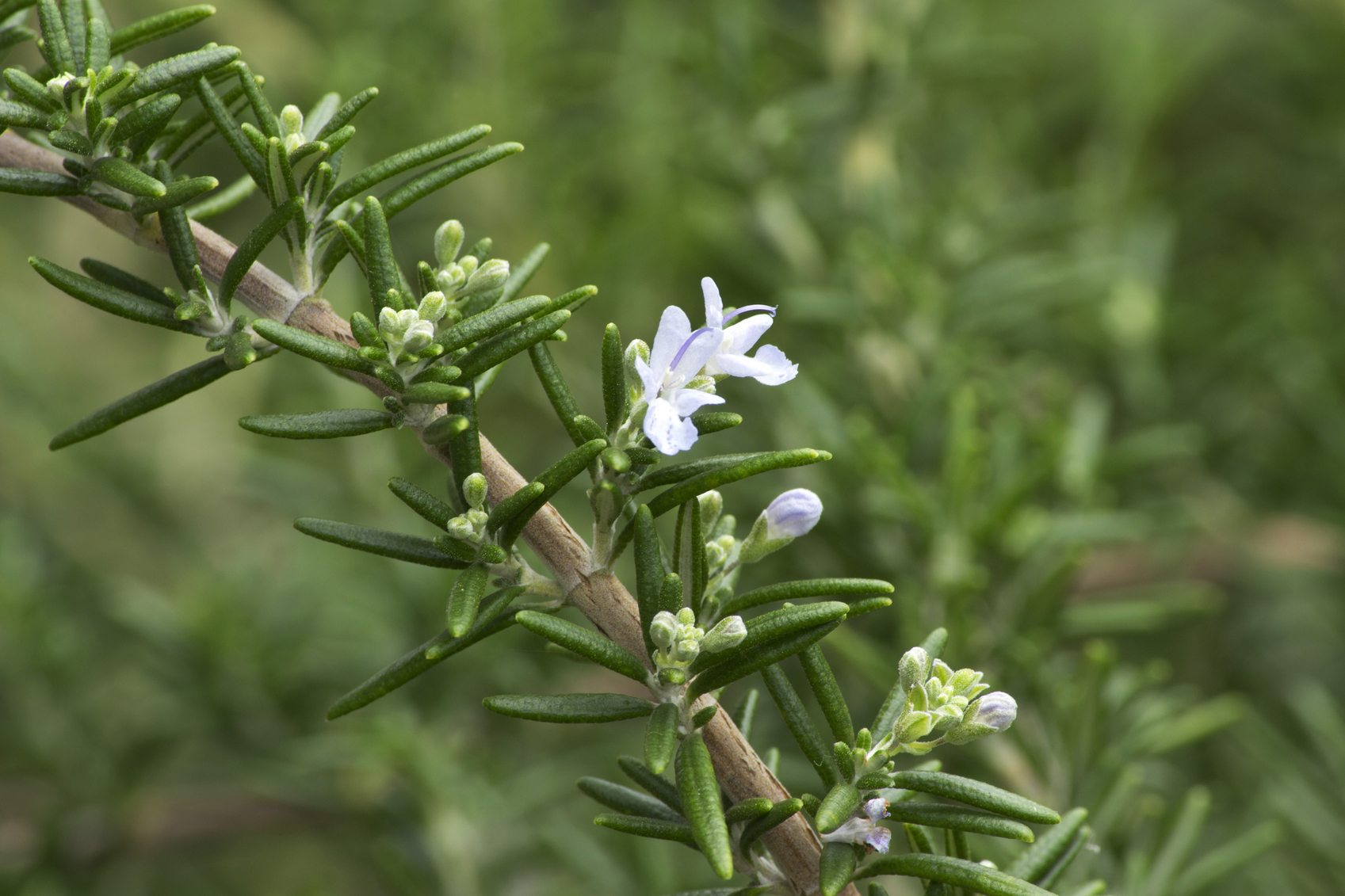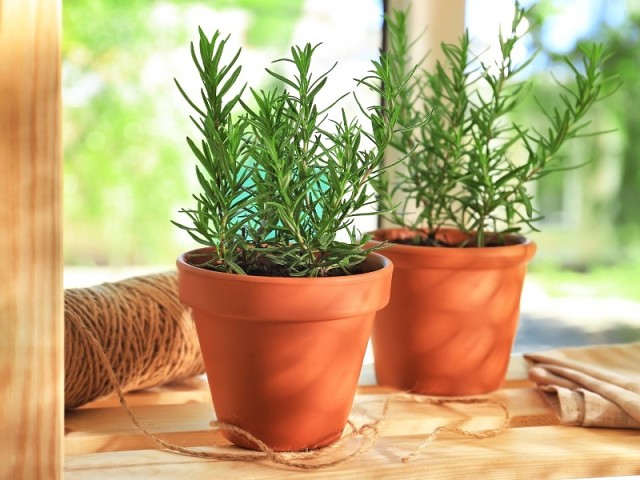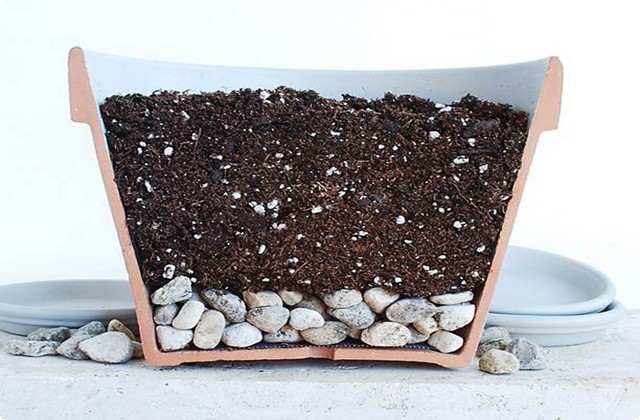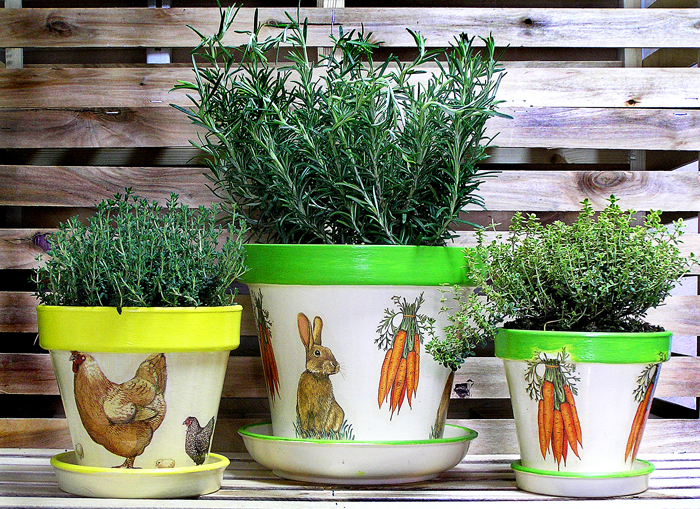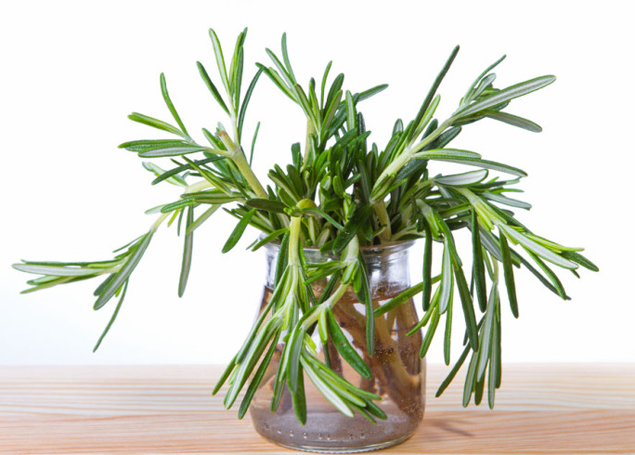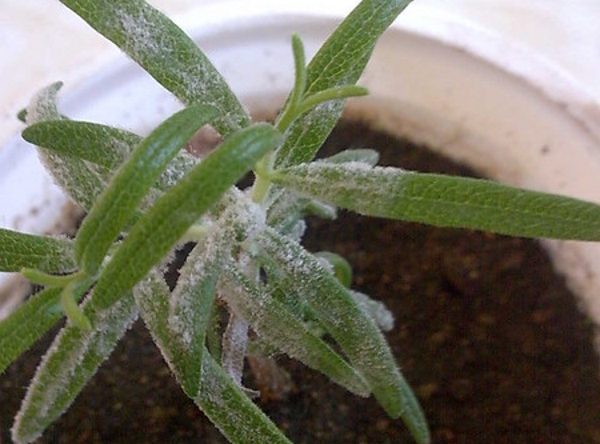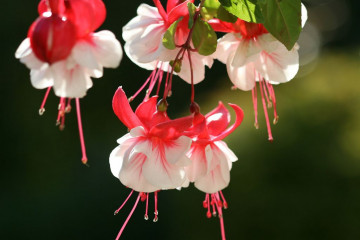Rosemary - growing in an apartment, care
Content:
Rosemary (rosmarinus) is an evergreen shrub or subshrub belonging to the Yasnotkov family. The plant lives mainly in the Mediterranean countries - Greece, Spain, Cyprus, the French Riviera, as well as in the countries of North Africa. But today varieties have been bred that can be successfully grown even indoors, in Russia.
Indoor rosemary: growing in an apartment
Due to its peculiar taste, which combines notes of citrus fruits, a light aroma of pine needles and camphor, rosemary is widely used in food preparation and the production of perfumery products.
For the first time in Russia, rosemary as a perennial plant was cultivated at the beginning of the 19th century on the Crimean peninsula. In other places, due to frost intolerance, cultivation of this plant in open ground is not possible.
Under natural growing conditions, rosemary can reach very impressive sizes - up to 2 m. In southern countries, this fragrant shrub, along with food, is widely used in garden design.
If the perennial rosemary is unlikely to take root in the garden bed, then growing a fragrant plant on a windowsill in an apartment is a completely feasible task.
For this, the most suitable varieties are:
- drug;
- "Dewdrop";
- "Richard";
- "Tenderness"
These varieties are undersized, rather unpretentious, and do not require any special conditions.
In order for rosemary on the windowsill to delight household members with a healthy look, you need to know under what conditions the plant will feel good. By the way, like all perennial plants adapted to growing in an apartment, rosemary will grow rather slowly, so you should be patient.
Rosemary - planting and care at home
How to grow rosemary at home? First, you should choose the right place to place the shrub. For a southern plant, placement on a southern, southwestern or western windowsill will be comfortable. If, nevertheless, there is not enough light, you can always use special lamps. In any case, in winter the plant will have to be illuminated for several hours in the morning and in the evening.
In the summer, when the danger of night frosts or temperature changes has passed, you can place a pot of rosemary on a loggia or balcony. In this case, it is imperative to shade the plant from direct sunlight. In addition, drafts and the accumulation of cold air can adversely affect the development of an indoor dweller in outdoor conditions.
Temperature
The southern inhabitant of rosemary will feel great at temperatures from 21 ° C to 25 ° C in the summer, and about 15 ° C in the winter.
If there is a desire to stimulate the flowering of shrubs in winter, then the content assumes an even lower temperature - from 5 ° C to 10 ° C.
Watering
Proper watering is one of the deciding factors in the successful cultivation of rosemary.
The soil in which the plant grows must be constantly moist. However, constant dampness and waterlogging of the soil will definitely lead the plant to death.
Drought, especially prolonged, will also not have a positive effect on the shrub. In short, a balance should be struck in providing the rosemary with moisture: do not overflow, but also avoid dryness.
Spraying
To keep the tips of the rosemary leaves from drying out, you should spray the plant regularly. This is especially important when the bush is just gaining growth.
In this case, you should spray the plant with soft or melt water twice a day. When the plant is older, you can reduce the spraying to once a day.
Priming
Growing rosemary does not require any special soil, but if the soil is neutral-acidic or slightly alkaline, the bush will grow better. The substrate must be air permeable. It is better if it is light sandy, calcareous or gravelly soils.
Before filling the pot with soil, it must be sieved to separate large clods, stones, weed roots. In addition, before planting a bush in the soil mixture, you need to disinfect it from possible pests by calcining, freezing or treating with an antifungal agent.
Top dressing
Usually, when growing a rosemary bush indoors, regular feeding is not required. However, fertilization can be applied some time after planting so that the plant grows faster. For this purpose, a universal fertilizer is perfect.
Transfer
A young bush is transplanted annually in April. If rosemary has lived in the house for more than 5 years, then the plant can be transplanted in the 2nd or 3rd year after the last transplant.
In order to plant the rosemary in a new pot, a transhipment method is used. Transplanting an adult plant does not allow the complete elimination of the earthen coma. It will be enough to replace the topsoil with a new fertile substrate.
Pot selection
For this southern plant, the choice of capacity is an important factor that determines how comfortable it will be at home. Rosemary has impressive roots. This means that the pot for planting must be chosen so that the home shrub is not cramped in it.
The most suitable container will be made from natural materials. The porous walls of such a container will allow the root system of the bush to carry out air exchange, and the excess liquid can easily evaporate without stagnation.
A plastic rosemary pot is not desirable. Plastic potted rosemary can die from lack of air or moisture.
Pruning
Cropping the rosemary bush, which is grown at home on the windowsill, is designed to give the plant the desired shape. In addition, this procedure promotes the formation of new lateral shoots.
When pruning, 1/3 of the stem is removed. In no case should you cut off the branch at the level of the lignified part, as this will weaken or completely destroy the bush.
Bloom
Blooming rosemary at home can not always be achieved. Even less often, a fragrant bush is covered with white, pink, lilac or purple flowers if the plant was grown from seed.
If the goal is to achieve the appearance of flowers, then you should not pinch the tops, prevent air stagnation and sudden temperature fluctuations.
Reproduction
Rosemary can be propagated in two ways:
- seeds;
- cuttings.
Seed propagation
In order to grow a spicy bush from seeds, you need to be patient and be prepared for the fact that this venture will fail, since rosemary seeds have a low germination rate.Be that as it may, in early spring or late autumn, before deepening into the ground, the seed must be soaked for 2 days in water.
When the seeds are swollen, they are sown in a miniature greenhouse or in a planting box, which will need to be covered with plastic wrap or glass. Watering the seedlings is not recommended, as the soil may erode. The substrate should be moistened with a fine spray gun as it dries out. Airing of the landing is done twice a day. It will take 2-4 weeks for the first shoots to appear.
After the first young shoots appear, you need to wait for the plant to mature to the third leaf, and then dive. Seedlings can be sent to pots, where they will grow constantly, if the plant is strong enough, and it becomes cramped in the seedling box.
Propagation by cuttings
If your attempt to grow rosemary from seed fails, don't despair. You can grow a spicy bush from cuttings. Planting material is usually taken after pruning an adult plant.
What should be done:
- remove several lower leaves from the cut branch;
- place in a vessel with water or nutrient fluid;
- put the vessel with cuttings in a well-lit place;
- wait for the roots to appear.
As soon as the root system of the plant is more or less formed and strengthened, you can immediately place the cutting in a permanent place of growth. The top of the young bush should be pinched, then the lateral shoots will develop more actively.
A young bush should be taken care of as usual.
Diseases and pests
Growing rosemary at home in a pot is usually straightforward. But sometimes mistakes in care or inattention to the needs of the green southerner can lead to disease and treacherous attack of pests.
Watering in excess of the norm, waterlogging of the soil or lack of proper aeration can provoke the development of powdery mildew - a dangerous fungal disease that leads to the death of the plant. In this case, it is necessary to remove the affected areas of the plant, treat the plant with a fungicide and rethink the approach to the content of rosemary.
In some cases, a complete replacement of the soil mixture will be required. If the mealy race has affected the plant by more than 2/3, then it is unlikely to be saved. It would be advisable to replace the plant completely.
In dry air conditions, rosemary is attacked by parasitic insects. Southerners are especially fond of spider mites and aphids.
Rosemary is often affected by the scabbard. Unfortunately, thanks to the dense chitinous shell, the insect practically does not lend itself to the influence of biological products, so the parasites will need to be collected by hand, and only then treated with a chemical solution. Grow rosemary separately from other plants during the treatment period.
If you want to get a plant that will not cause any special problems and, moreover, will be useful in the kitchen, then you should pay attention to rosemary. Planting and caring for this fragrant bush is within the power of even a beginner.
